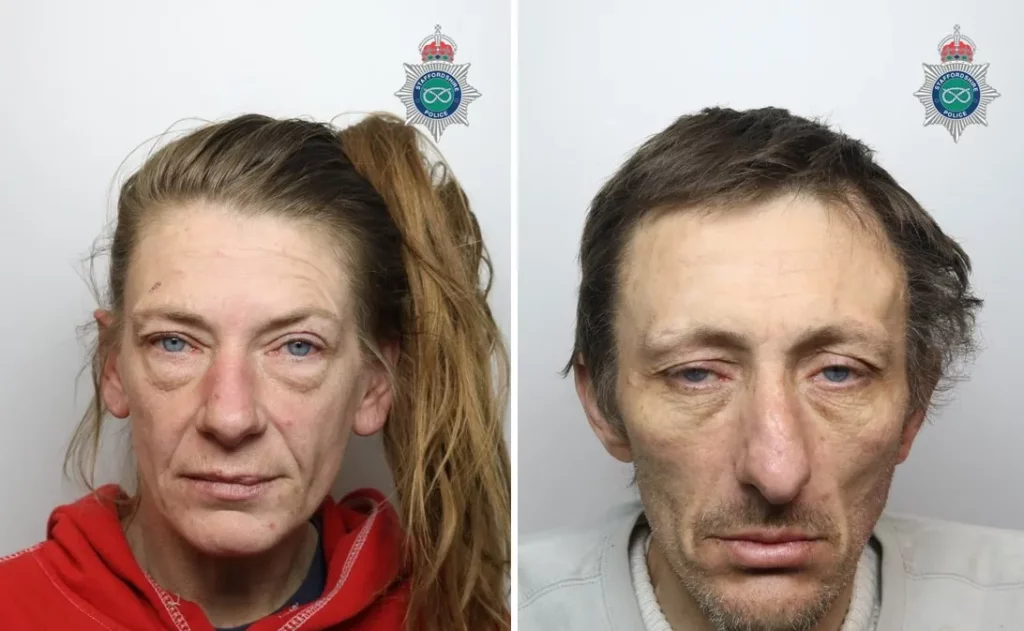
A man and a woman that worked together to befriend vulnerable victims for their own gain have been jailed for a collective sentence spanning nearly ten years.
Nicola Clewes, and Gary Betts, both 46 and from Meir, Stoke-on-Trent, admitted burglary and theft offences at an earlier hearing and were sentenced at Stoke-on-Trent Crown Court on Thursday 23 January.
Between February and April last year, the duo turned up at different addresses in Meir and targeted vulnerable people. They told one woman they were delivering post, eventually being allowed inside the victim’s home. They ate food, helped themselves to drinks and took cash from the victim’s purse before leaving.
They took household items and more cash from other victims, as well as medication.
When we found out about the thefts, we started immediate work to track the pair down and secure the evidence needed to charge them.
Clewes pleaded guilty to robbery and three counts of burglary. She was sentenced to six-and-a-half-years imprisonment.
Betts admitted two counts of burglary and was jailed for 40-months.
PC Hannah Sheldon, the officer in the case, said: “Clewes and Betts targeted vulnerable people repeatedly for their own financial gain and their sentences reflect this level of offending.
“This type of crime can have profound impact on victims, livelihoods and communities.
“We’re continuing to work hard each and every day to proactively target those seeking to exploit people living in Staffordshire for their own profit.”
2025.1.30 Man climbed through ex-girlfriend’s window in south London then murdered her
Hussain Haron grabbed a knife and violently stabbed Felecia Cadore after an altercation, a court heard
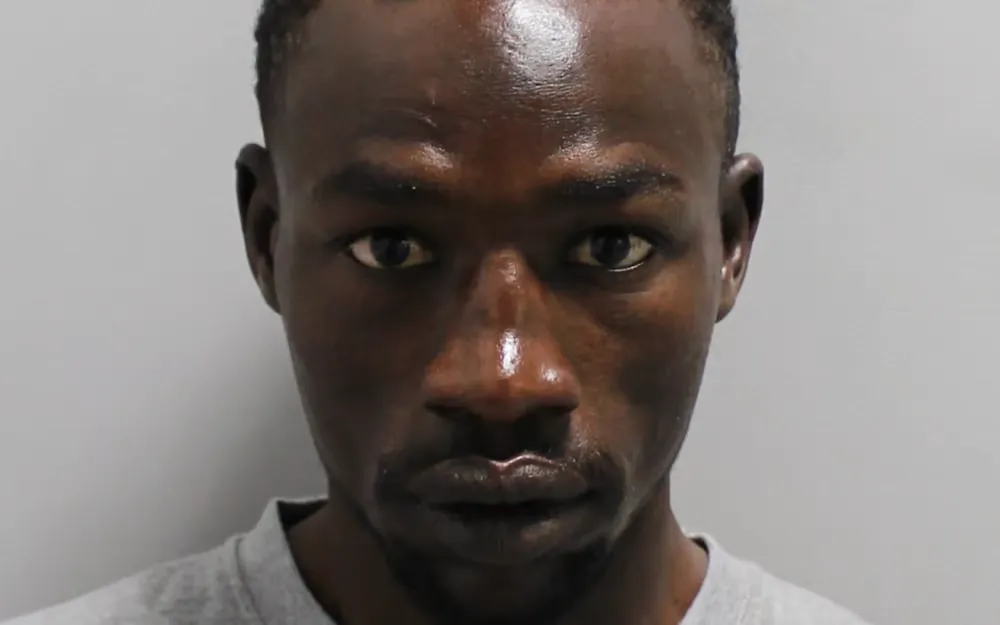
Met Police
A man climbed through his ex-girlfriend’s window in Croydon and stabbed her to death in a “brutal” attack, police have said.
The Met Police were called to an altercation at a home in Grenaby Avenue on June 9, 2023.
Felecia Cadore, 29, was found with stab wounds and was taken to hospital in a critical condition. She died from her injuries five days later.
Hussain Haron, 24, from Mitcham, was found guilty of the murder of Felecia Cadore on Wednesday at Snaresbrook Crown Court, following a six-day trial.
The court heard that Haron had climbed through the window of the address to try and find Ms Cadore.
Following an altercation between the two, Haron grabbed a knife and violently stabbed her.
He was arrested later that afternoon and was found in possession of the knife he used to attack Ms Cadore.
Despite claiming he was acting in self-defence, Haron was found guilty of murder by the jury.
He is due to be sentenced at the same court on Friday.
Detective Chief Inspector Craig Magee, from Specialist Crime, said: “Today, justice has been served following the conviction of Hussain Haron for the murder of Felecia Cadore in June 2023.
“It is an example of the devastating impact violence against women and girls can have.
“The verdict is a result of officers working meticulously and tirelessly to secure evidence.
“It is also testament to the courage of the witnesses who helped establish the facts, and bravely stood in the courtroom to give their evidence.
“It has been 18 months since Felecia was killed. I hope that today’s verdict provides her family with some comfort and allows them to begin to process the effect this brutal crime has had.
“We will continue to support the family of Felecia following this horrific attack.”
2025.1.27 Five people from Wirral jailed for nearly 45 years for Class A, B and C drugs conspiracy

We have today, Monday 27 January, welcomed the sentencing of five people from Wirral to nearly 45 years in prison for their part in a multi-million-pound Class A, B and C drugs conspiracy.
As part of Operation Terminal – a widespread investigation into large-scale drugs supply – detectives identified that a gang of people were operating a sophisticated drug distribution business from within a storage unit in Birkenhead.
The gang had amassed extensive quantities of Class A, B & C controlled drugs including street drugs and prescription medication, the drugs were distributed both nationally and internationally, believed to be via the ‘dark web’.
Enquiries revealed the gang predominantly used pre-postage labels and dropped the orders off at a post office in a local convenience store for mailing out via Royal Mail.
As part of our enquiries we seized drugs estimated to be worth between £1.4 million and £2.7 million.
The seizures included:
7kg of MDMA powder (valued between £205,000 and £359,000)
125,550 ecstasy tablets (valued between £664,000 and £1.3 million)
2kg of cocaine
454g of magic mushrooms
4kg of LSD
23800 2CB tablets
8kg of ketamine (valued between £142,000 and £285,000)
Over 320,000 prescription-drug tablets including Tapentadol, Diazepam and Tramadol
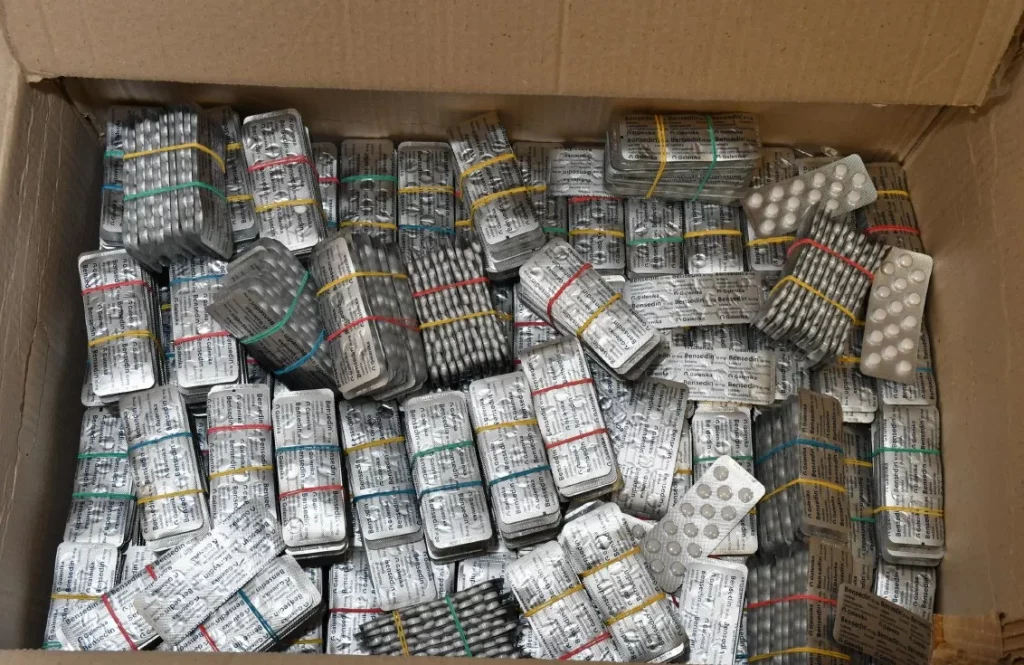
Following intelligence Operation Terminal commenced in 2023.
On 18 October, Matrix officers executed a search warrant at a premises on a business park in Birkenhead where they located a large quantity of Class A, B & C drugs (including cocaine and ecstasy) in a storage unit.
A man arrived at the unit a short time later and gave a false name to officers. He was later identified as Benjamin Crane.
Enquiries revealed that the leaseholder of the unit was Bradley Grey, Crane’s stepfather.
Following their arrests detectives examined CCTV at the storage unit and identified Kylie Collins and Abbie Crane, stepsister of Benjamin Crane, as also being present at the unit on a number of occasions.
Further enquiries enabled detectives to link the activity at the storage unit to a separate investigation at a local convenience store where large numbers of parcels were intercepted and identified as containing Class A,B & C drugs.
This investigation identified Kay Davies attending and posting large quantities of parcels. Davies was arrested in January 2024 and admitted posting parcels on behalf of Benjamin Crane.
All five were charged with conspiracy to supply controlled drugs and a trial was heard at Liverpool Crown Court in November 2024. The sentencing was adjourned until 24 January.
Benjamin Phillip Crane, 35, of Wakefield Drive, Leasowe, pleaded guilty prior to trial of 11 counts of conspiracy to supply controlled drugs. He was sentenced to 14 years in prison.
Bradley Gene Grey, 43, of Wakefield Drive, Leasowe, pleaded guilty on the first day of the trial to 11 counts of conspiracy to supply controlled drugs. He was sentenced to 10-and-a-half years in prison.
Abbey Crane, 24, of Upton Road, Moreton, was found guilty after trial of 11 counts of conspiracy to supply controlled drugs. She was sentenced to nine years in prison.
Kylie Collins, 36, of Knutsford Green, Moreton, was found guilty of 11 counts of conspiracy to supply controlled drugs and was sentenced to six years in prison.
Kay Davies, 64, of Reeds Avenue East, Leasowe, was found guilty of five counts of conspiracy to supply controlled drugs and was sentenced to four-and-a-half years in prison.
Detective Sergeant Ste Mercer said: “This was a large-scale drugs enterprise which was being run like a business from a storage unit in Birkenhead.
“The gang worked together to source, pack and deliver the drugs across the whole of the UK and internationally, utilising the Dark Web.
“Suspicions were raised when parcels delivered to the post office were suspected to contain drugs, upon examination hundreds of packages were found to have Class A, B & C drugs inside.
“We carried out a thorough investigation to identify all those who we believed to be involved in either sourcing, packaging or further distributing the drugs. I am sure they believed as their activity was behind the closed doors of a secure unit that they would not be caught out.
“I am pleased they are all now behind bars for a significant period of time where they can no longer continue to spread misery through their actions.
“We know the devastation that drugs cause to families and our communities. Merseyside Police remains relentless in our pursuit of such criminals and ending their drugs trade.
“I hope this result shows that we are committed in our pursuit of these people who think they are above the law and believe they can evade justice.
“We will continue to target criminals by thoroughly examining any evidence and carrying out any necessary searches across Merseyside.”
Anyone with information on drug dealing is asked to contact @MerPolCC, or Crimestoppers, anonymously on 0800 555 111.
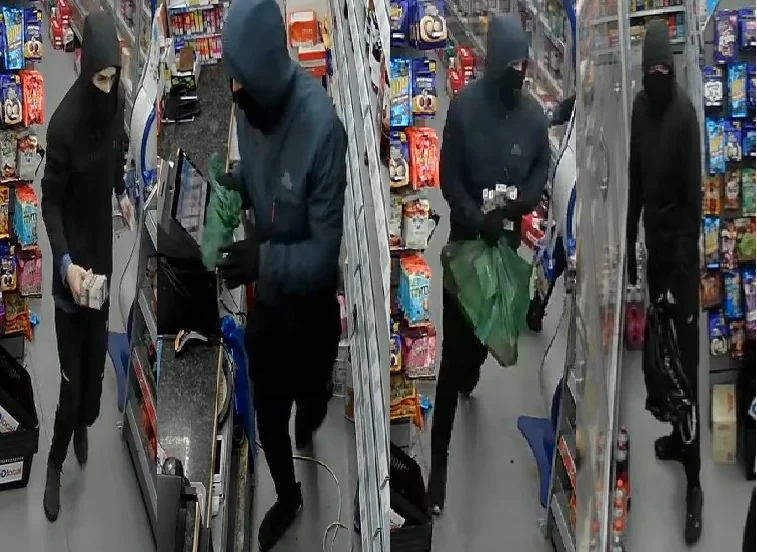
Detectives have issued CCTV images of three men who could have information that may assist with their enquiries following robbery of an off-licence in Halewood yesterday, Sunday 26 January.
At around 9.15pm, it was reported that three men all dressed in black and wearing balaclava’s entered Discount Booze Store on Wood Road.
One offender then grabbed hold of the shop assistant while the other two men punched and kicked him. They then opened the cash register and stole money and electric vapes from the shop.
The three offenders ran off towards Higher Road.
One man was reported to have a Liverpool accent while the other two had a Southern accent, possibly from London or Essex.
The victim sustained bruising and swelling to his face, head, neck and shoulders which didn’t require medical treatment.
Extensive CCTV and witness enquiries have been conducted, and detectives have issued CCTV images of a man they believe could assist in their investigation.
Detective Inspector Richie Shillito said: “This was a very distressing experience for the victim who was left in a state of shock.
“We understand that the images do not show the men’s faces as they’re wearing balaclavas, however people may recognise the clothing especially when they ran off down the road.
2025.1.24 Teen who killed 3 girls at Taylor Swift-themed dance class in England sentenced to over 50 years
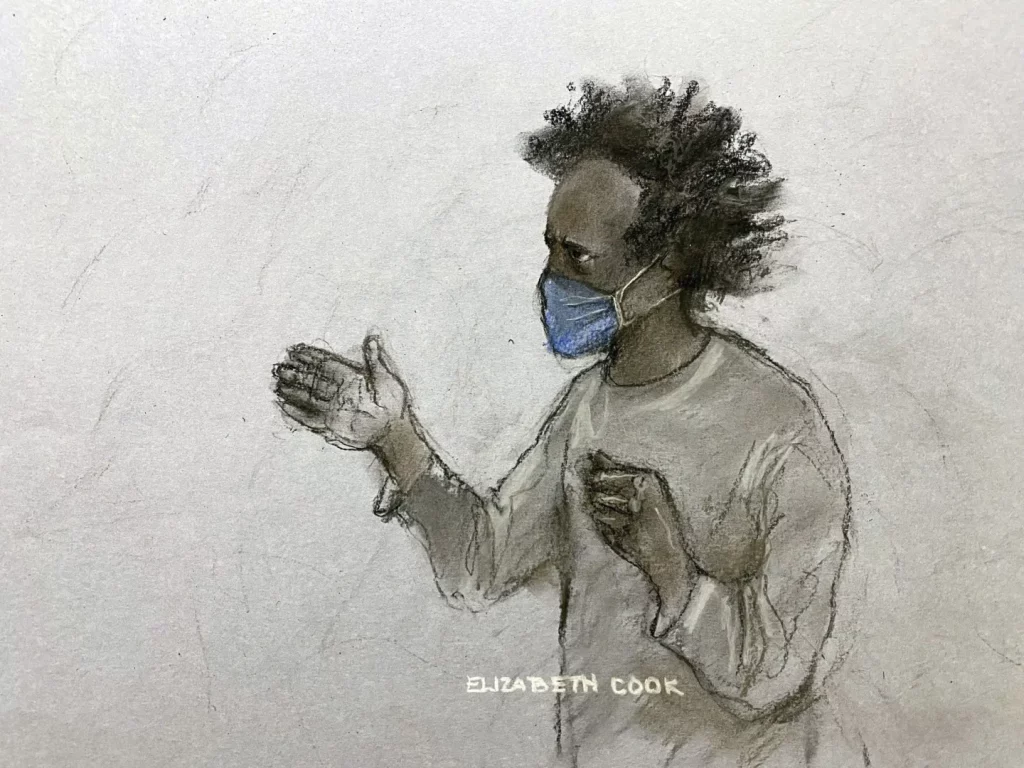
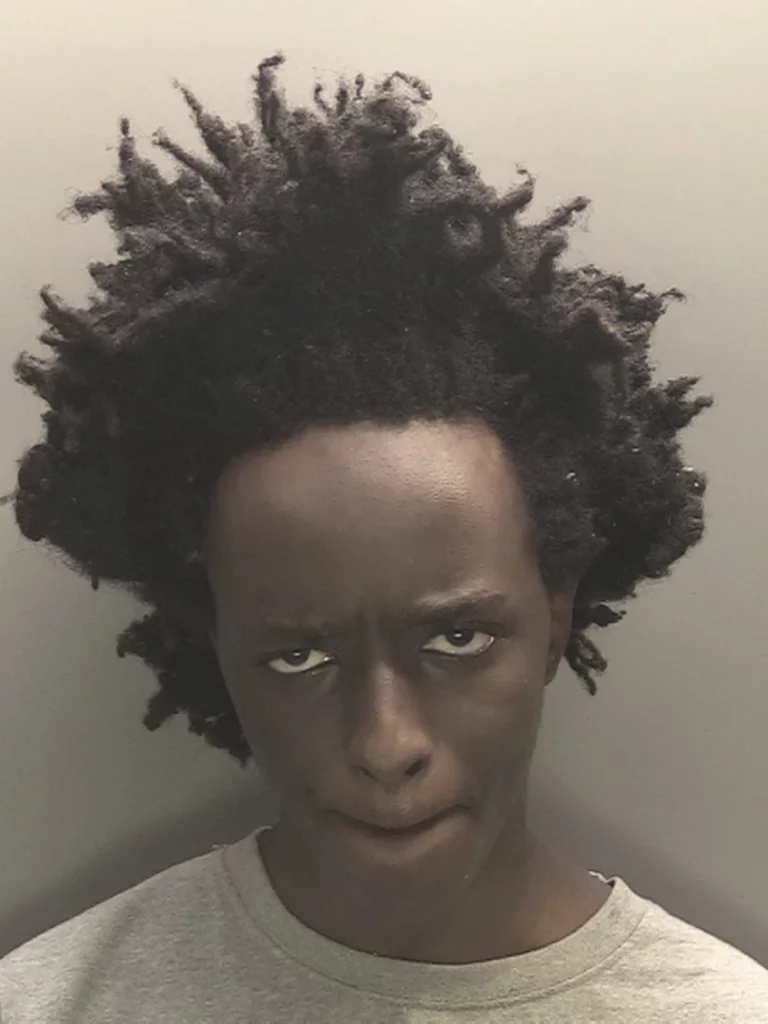
LONDON (AP) — A teenager who stabbed three young girls to death at a Taylor Swift-themed dance class in England was sentenced Thursday to more than 50 years in prison for what a judge called “the most extreme, shocking and exceptionally serious crime.”
Judge Julian Goose said 18-year-old Axel Rudakubana “wanted to try and carry out mass murder of innocent, happy young girls.”
Goose said that he couldn’t impose a sentence of life without parole, because Rudakubana was under 18 when he committed the crime.
But the judge said he must serve 52 years, minus the six months he’s been in custody, before being considered for parole, and “it is likely he will never be released.”
Rudakubana was 17 when he attacked the children in the seaside town of Southport in July, killing Alice Da Silva Aguiar, 9, Elsie Dot Stancombe, 7, and Bebe King, 6. He wounded eight other girls, ranging in age from 7 to 13, along with teacher Leanne Lucas and John Hayes, a local businessman who intervened.
The attack shocked the country and set off both street violence and soul-searching. The government has announced a public inquiry into how the system failed to stop the killer, who had been referred to the authorities multiple times over his obsession with violence.
Defendant disrupts the hearing
Rudakubana faced three counts of murder, 10 of attempted murder and additional charges of possessing a knife, the poison ricin and an al-Qaida manual. He unexpectedly changed his plea to guilty on all charges on Monday.
But he wasn’t in court to hear sentence passed on Thursday.
Hours earlier he had been led into the dock at Liverpool Crown Court in northwest England, dressed in a gray prison tracksuit. But as prosecutors began outlining the evidence, Rudakubana interrupted by shouting that he felt ill and wanted to see a paramedic.
Goose ordered the accused to be removed when he continued shouting. A person in the courtroom shouted “Coward!” as Rudakubana was taken out.
The hearing continued without him.
Horror on a summer day
Prosecutor Deanna Heer described how the attack occurred on the first day of summer vacation when 26 little girls were “gathered around the tables making bracelets and singing along to Taylor Swift songs.”
Rudakubana, armed with a large knife, intruded and began stabbing the girls and their teacher.
The court was shown video of the suspect arriving at the Hart Space venue in a taxi and entering the building. Within seconds, screams erupted and children ran outside in panic, some of them wounded. One girl made it to the doorway, but was pulled back inside by the attacker. She was stabbed 32 times but survived.
Gasps and sobs could be heard in court as the videos played.
Heer said two of the dead children “suffered particularly horrific injuries which are difficult to explain as anything other than sadistic in nature.” One of the dead girls had 122 injuries, while another suffered 85 wounds.
A teenager obsessed with violence
The prosecutor said Rudakubana had “a longstanding obsession with violence, killing, genocide.”
“His only purpose was to kill. And he targeted the youngest and most vulnerable in society,” she said, as relatives of the victims watched on in the courtroom.
Heer said that when he was taken to a police station, Rudakubana was heard to say: “It’s a good thing those children are dead, I’m so glad, I’m so happy.”
The killings triggered days of anti-immigrant violence across the country after far-right activists seized on incorrect reports that the attacker was an asylum-seeker who had recently arrived in the U.K. Some suggested the crime was a jihadi attack, and alleged that police and the government were withholding information.
Rudakubana was born in Cardiff, Wales, to Christian parents from Rwanda, and investigators haven’t been able to pin down his motivation. Police found documents about subjects including Nazi Germany, the Rwandan genocide and car bombs on his devices.
In the years before the attack, he had been reported to multiple authorities over his violent interests and actions. All of the agencies failed to spot the danger he posed.
In 2019, he phoned a children’s advice line to ask “What should I do if I want to kill somebody?” He said he had taken a knife to school because he wanted to kill someone who was bullying him. Two months later, he attacked a fellow student with a hockey stick and was convicted of assault.
The definition of terrorism
Prosecutors said Rudakubana was referred three times to the government’s anti-extremism program, Prevent, when he was 13 and 14 — once after researching school shootings in class, then for uploading pictures of Libyan leader Moammar Gadhafi to Instagram and for researching a London terror attack.
But they concluded his crimes should not be classed as terrorism because Rudakubana had no discernable political or religious cause. Heer said “his purpose was the commission of mass murder, not for a particular end, but as an end in itself.”
Prime Minister Keir Starmer said this week the country must face up to a “new threat” from violent individuals whose mix of motivations test the traditional definition of terrorism.
“After one of the most harrowing moments in our country’s history, we owe it to these innocent young girls and all those affected to deliver the change that they deserve,” Starmer said after the sentencing.
Wrenching testimony from victims
Several relatives and survivors read emotional statements in court, describing how the attack had shattered their lives.
Lucas, 36, who ran the dance class, said that “the trauma of being both a victim and a witness has been horrendous.”
“I cannot give myself compassion or accept praise, as how can I live knowing I survived when children died?” she said.
A 14-year-old survivor, who can’t be named because of a court order, said that while she was physically recovering. “we will all have to live with the mental pain from that day forever.”
“I hope you spend the rest of your life knowing that we think you’re a coward,” she said.
The prosecutor read out a statement from the parents of Alice Da Silva Aguiar, who said their daughter’s killing had “shattered our souls.”
“We used to cook for three. Now we only cook for two. It doesn’t seem right,” they said. “Alice was our purpose for living, so what do we do now?”
2025.1.23 As Southport Killer Is Sentenced, Court Hears of Acts of Heroism During Brutal Attack
Axel Rudakubana, 18, will probably never be released, a judge ruled as he condemned the “extreme violence” of his knife attack on a dance class last year.
The teenager who killed three young girls and wounded 10 other people in a knife attack on a children’s dance class in Southport, England, last summer was sentenced on Thursday to life in prison.
A Liverpool courtroom heard harrowing details of how Axel Rudakubana, 18, rampaged through a dance studio where 26 children had gathered on the morning of July 29. But they also heard of the acts of heroism that had played out during and after the attack, as organizers and bystanders rushed to save children.
“The harm that Rudakubana has caused to each family, to each child, to the community has been profound and permanent,” said Judge Julian Goose, who presided over the case. “It was such extreme violence of the utmost and exceptionally high seriousness that it is difficult to comprehend why it was done.”
Under English law, the judge was not able to sentence him to a whole life order — meaning he would never be released from prison on parole — because he was 17 at the time of the attack. But Mr. Rudakubana, who pleaded guilty to three counts of murder, 10 counts of attempted murder and other charges earlier this week, must serve a minimum of 52 years before he could possibly be paroled, and the judge said it was unlikely that he would ever be released.
Mr. Rudakubana briefly appeared in Liverpool Crown Court on Thursday morning, wearing a gray sweatsuit and a blue medical mask that covered his mouth and nose. But as prosecutors began reading out the details of the case, he repeatedly shouted about feeling ill, and was eventually removed from court.
Judge Goose said that Mr. Rudakubana had been “determined to disrupt the hearing” so that he would not have to face his victims’ families, noting that his outbursts had come after medical specialists had examined him that morning and determined him fit to attend.
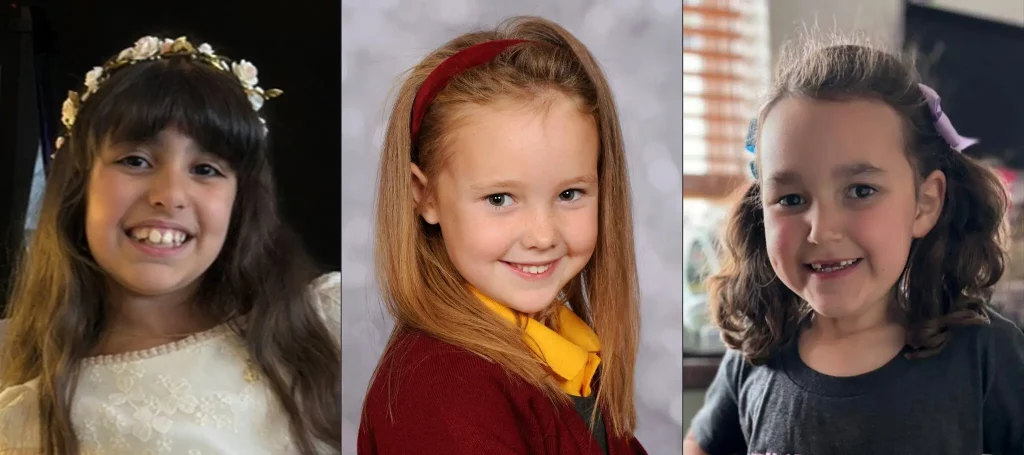
Prosecutors revealed the horrifying nature of the attack on July 29 as they read out the details of the case. Deanna Heer, a lawyer for the prosecution, said Mr. Rudakubana had “targeted the youngest, most vulnerable in order to spread the greatest level of fear and outrage, which he succeeded in doing.”
She told the courtroom that while Mr. Rudakubana was under arrest at the police station after the attack, he was heard saying, “It’s a good thing those children are dead,” and “I’m so glad.”
Ms. Heer recounted how he had traveled by taxi to Hart Space, where a sold-out Taylor Swift-themed dance class for children ages 6 to 11 was underway during the summer break from school. Visual evidence shown in court, taken from CCTV footage and police-worn body cameras, showed Mr. Rudakubana arriving outside the dance studio.
He entered the building and stabbed several children as well as Leanne Lucas, one of the teachers who had organized the class. Moments later, screams could be heard on the footage, before children were seen running from the building.
Some were covered in blood and collapsed before bystanders helped them.
Several people wept in the courtroom as the footage was shown, and some chose to leave, overcome by emotion. The injuries suffered by Bebe King, 6, and Elsie Dot Stancombe, 7, were so severe that they died inside the building. Alice da Silva Aguiar, 9, ran outside but soon collapsed. She was taken to the hospital and died the next day. Eight other children and two adults, including Ms. Lucas, were wounded.
In a statement read out in court, Ms. Lucas said that her injuries had affected her physically and mentally.
“I, as do the girls, have scars we cannot unsee, scars we cannot move on from,” she said, adding, “To discover that he had always set out to hurt the vulnerable is beyond comprehensible. For Alice, Elsie, Bebe, Heidi and the surviving girls, I’m surviving for you.”
But amid the horror, there was also heroism, the court heard. After Ms. Lucas was stabbed in the back, she still managed to usher the children out the door and urge them to run for safety, even as she bled from a severe wound.
Another teacher in the dance studio, Heidi Liddle, also encouraged children to flee, before one girl ran toward the bathroom. Ms. Liddle followed her inside, locked the door and braced her foot against it to protect them. She told the girl not to make a sound. The police later rescued them uninjured.
John Hayes, a businessman who worked nearby, rushed to Hart Space and tried to grab the knife from Mr. Rudakubana, before being wounded. Two window cleaners, also working nearby, Marcin Tyjon and Joel Verite, heard the commotion and ran to the scene. Mr. Tyjon gave CPR to Alice in a parking lot outside. Mr. Verite followed the police into the building, picked up Bebe and carried her out of the building, screaming as he did so because of the severity of her injuries.
Since Mr. Rudakubana pleaded guilty, a portrait of a deeply troubled young man obsessed with violence has emerged, as has the fact that he was on the radar of the local authorities for years before the attack in Southport, a town north of Liverpool.
After the attack, a series of anti-immigrant riots broke out in Britain after disinformation about the perpetrator’s identity swirled on social media and messaging apps. False claims that he was an undocumented immigrant or newly arrived asylum seeker were amplified by far-right agitators. Mr. Rudakubana is a British citizen who was born in Wales to parents originally from Rwanda.
At age 13 and 14, he was referred three times to Prevent, a British counterterrorism program. The first time was for researching school shootings during class, in 2019. Then in 2021, he was referred for uploading images of Col. Muammar el-Qaddafi, the Libyan dictator, to his Instagram account, and for researching the London Bridge terrorist attack. But those referrals were ultimately dropped because it was determined each time that he did not meet the threshold for intervention.
There was no evidence that he ascribed to any particular political or religious ideology, the police and prosecutors said. Content found on Mr. Rudakubana’s computer and tablets showed a longstanding fascination with violence, killing and genocide.
The material included a history of Nazi Germany, reports on violence in modern Sri Lanka, documents about war in Chechnya, a book on clan cleansing in Somalia, academic reports on the Rwandan genocide and a paper on punishments used on enslaved people on 18th-century British plantations.
Prime Minister Keir Starmer said on Tuesday that the attack was a sign that terrorism in the country was evolving, and that young people were being radicalized by “a tidal wave of violence freely available online.”
Speaking during the sentencing hearing, Stan Reiz, the defense lawyer for Mr. Rudakubana, said that his client showed a “total lack of empathy” but added: “There is no psychiatric evidence before the court that a mental disorder contributed to the defendant’s actions.”
In addition to the murder and attempted murder charges, Mr. Rudakubana was also convicted of producing a biological toxin, after investigators found ricin, a lethal chemical, under his bed, and of “possessing information” described as “of a kind likely to be useful to a person committing or preparing an act of terrorism,” because he had downloaded a PDF file titled “Military Studies in the Jihad Against the Tyrants: The Al Qaeda Training Manual.”
The case has raised questions about how the authorities missed opportunities to stop the violence before it began. The government has said it will conduct a public inquiry into the case.
Mr. Starmer, in a statement issued on Thursday evening, said that the “thoughts of the entire nation are with the families and everyone affected by the unimaginable horrors that unfolded in Southport.”
“After one of the most harrowing moments in our country’s history we owe it to these innocent young girls and all those affected to deliver the change that they deserve,” he added.
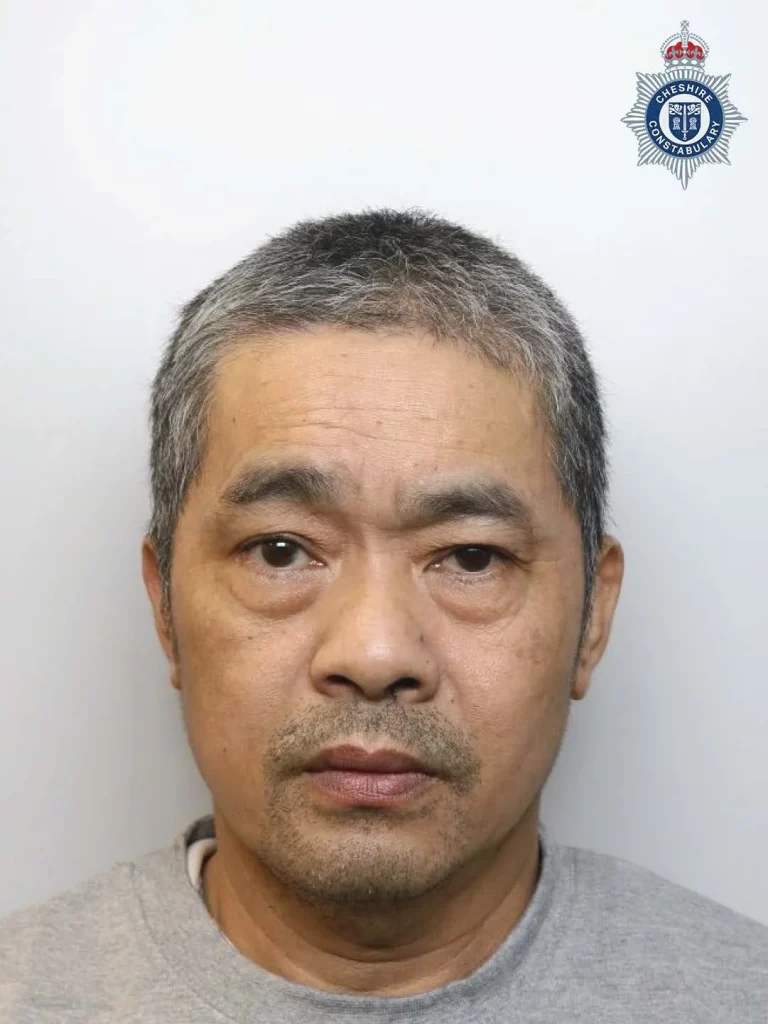
2025.1.23 Man jailed following Crewe cannabis farm closure
A man has been jailed for 18 months after officers seized over 300 cannabis plants from a farm in Crewe.
Thang Nguyen, of no fixed abode, appeared at Chester Crown Court on Wednesday 22 January where he was sentenced to 18 months imprisonment.
The 54-year-old was previously found guilty of production of class B drugs (cannabis).
The court heard that on Saturday 27 July 2024, officers from Crewe Local Policing Unit conducted a warrant at an address on High Street, Crewe.
The property had been converted into a cannabis farm containing a total of 369 cannabis plants.
Drug analysis experts estimated the plants could yield between £30,000 and £217,500 worth of drugs.
Officers swiftly arrested Nguyen, who was inside the property at the time. He was later charged.
Following the sentencing, Detective Constable Jamie Roberts who led the investigation said: “This is a great result which has enabled us to remove a significant quantity of cannabis from the streets of Crewe.
“This address had been converted into a sophisticated cannabis farm, with specialist lighting and ventilation systems to maximise the amount of class B drugs being cultivated inside. In total, the building contained well over 300 cannabis plants at various stages of growth, which have since been destroyed.
“We would urge anyone who has any concerns regarding the production or supply of illegal substances to contact Cheshire Police on 101 or visit the website.”
There are a number signs that could indicate that a property is being used as a cannabis farm, including:
•A strong and sickly sweet smell
•Equipment to grow cannabis being taken into a property, such as lighting and ventilation equipment
•Constantly covered or blocked-off windows – cannabis farms often have constantly closed curtains, black-out blinds or foil coverings
•People coming and going at all hours or neighbours you never see
•Strong and constant lighting day and night
•High levels of heat and condensation – cannabis farms often give off heat and the windows stay misted up
•A constant buzz of ventilation – listen out for a whirring sound as the growers try to create an ideal climate for cannabis plants to grow
•Lots of power cables – offenders often dig underground to lay cables that hook up to things like lamp posts so they do not have to pay for the enormous amounts of electricity they use.
2025.1.18 Warning issued to gym-goers after thief used locker code to target bank accounts
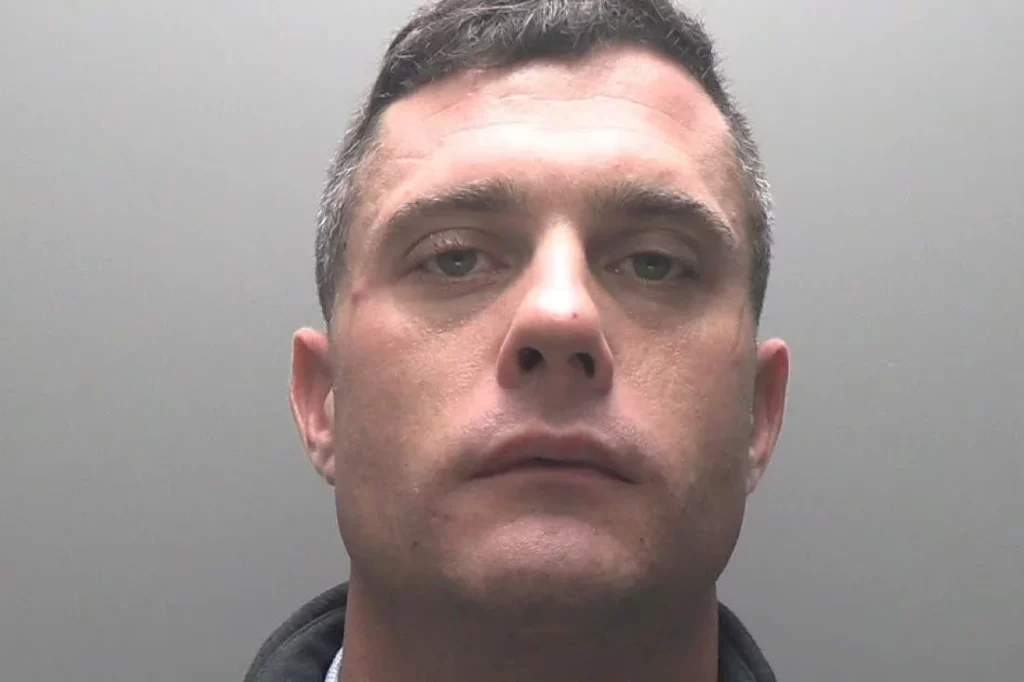
Police have warned gym-goers not to use the same Pin code for their lockers and bank cards after a prolific thief targeted luxury health clubs.
Declan Murphy, 35, secretly watched while a man entered his gym locker code, and guessed it would be the same as his phone and bank card Pins before stealing £500 from his account.
He bought himself time to take the money by drenching the man’s phone to damage it.
“Our message is clear, do not have the same Pin code for your locker as your phone or bank card Pins”
City of London Police
Murphy was found to be using membership cards under false names to repeatedly access Third Space and Nuffield Health gyms, a court heard.
Police said the technique has been used by other criminals, and warned the public to always use different codes for lockers and bank cards.
On Friday, Murphy, of Bromley, was jailed for two years and three months at Isleworth Crown Court having pleaded guilty to three counts of theft and 11 counts of fraud by false representation.
Sentencing the father-of-two, His Honour Judge Edward Connell described his offending as “pre-planned” and “well practised”.
In September 2024, the qualified carpenter watched as a man, who had only joined the gym after his wife died from cancer, put his four-digit code into his locker at a Third Space luxury health club in the City of London, City of London Police said.
He then broke into the locker, and correctly guessed that the code would be the same as the man’s phone and bank card Pins.
His victim later discovered Murphy had phoned the bank pretending to be him, and was given internet access to the bank accounts.
Murphy then drenched his victim’s phone in water to damage it, stopping the man from accessing his banking app.
The man noticed a missed call from his bank, but struggled to return the call because of the state of his phone.
Murphy withdrew £500 from a cash machine, and later the same day, unsuccessfully tried to buy £5,400 worth of items from an Apple store.
“It seems (Murphy’s) motivation has been financial having accumulated significant debts”
Judge Edward Connell
The court heard how the theft increased the “sense of loneliness” of his grieving victim.
Murphy is £15,000 in debt, and stole the cards to try and pay off what he owes, the sentencing hearing was told.
“It seems your motivation has been financial having accumulated significant debts,” the judge said.
He also withdrew £1,750 of cash using three different bank cards stolen from a different gym, and used a separate stolen card to try and withdraw £600 in cash.
The victims who lost money were eventually compensated by their banks, the court heard.
Detective Chief Inspector Kevin Ives, of City of London Police, said: “People who visit gyms expect their belongings to be safe in their lockers and don’t tend to expect anyone to be looking over their shoulder and stealing their Pin.
“Unfortunately, we know this is a method is used by prolific criminals like Murphy.
“Our message is clear, do not have the same Pin code for your locker as your phone or bank card Pins.”
As well as the jail term, Murphy was handed a criminal behaviour order banning him from visiting any Third Space or Nuffield Health gyms for six years.
2025.1.13 Jack the Ripper victim’s relative demands new inquest after possible DNA breakthrough: “A form of justice”
A descendant of one of Jack the Ripper’s victims has demanded a new inquest into one of history’s most notorious serial killers, after DNA evidence suggested the murderer was a Polish barber.
The true identity of Jack the Ripper, whose grisly murders terrorized the murky slums of Whitechapel in east London in 1888, has been a mystery ever since.
There have been dozens of suspects, from royalty and prime ministers down to bootmakers.
After extracting DNA from a shawl recovered from the scene of one of the killings, Jack the Ripper sleuth Russell Edwards claimed in 2014 that the murderer was Aaron Kosminski, an emigre from Poland, who worked as a barber.
The story goes that the shawl came from the murder scene of the Ripper’s fourth victim, Catherine Eddowes, on September 30, 1888.
At Edwards’ request, Doctor Jari Louhelainen, a senior lecturer at Liverpool John Moores University, isolated seven small segments of DNA from blood stains on the shawl.
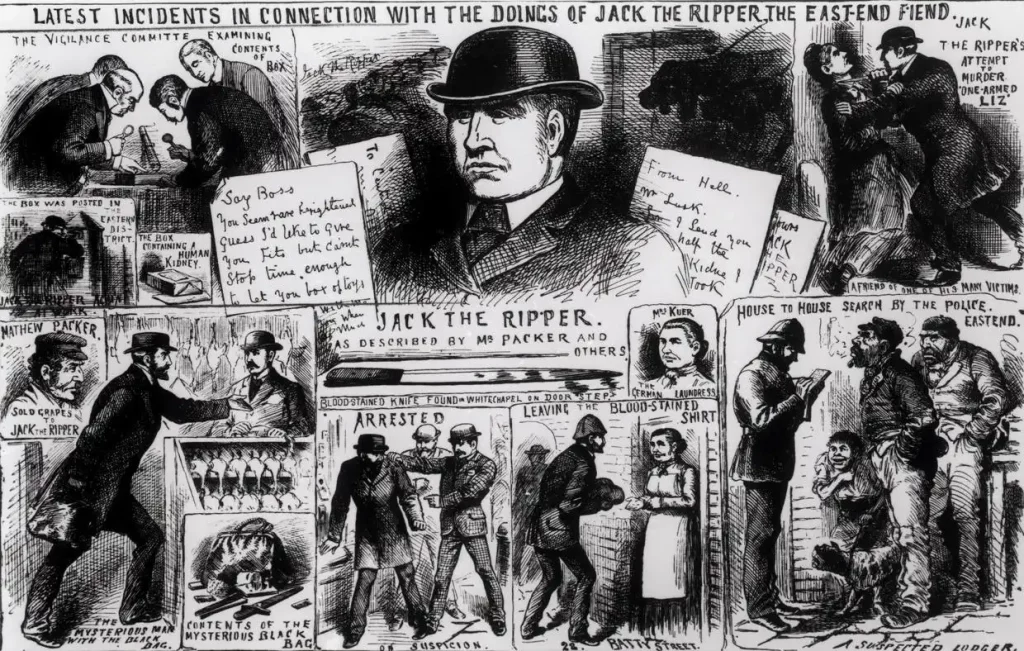
Photo by Art Images via Getty Images
They were matched with the DNA of Karen Miller, a direct descendant of Eddowes, confirming her blood was on the shawl.
“On the testing, the first result showed a 99.2% match. Since the DNA has two complementary strands, we went on and tested the other DNA strand, which game a perfect 100% match,” Louhelainen told the Liverpool Echo newspaper.
DNA from semen stains on the garment were matched with a descendant of Kosminski.
Edwards has demanded an inquest into the unsolved killing, saying the DNA evidence warrants it.
Miller backed the call in an interview with the Daily Mail published on Monday.
“The name Jack the Ripper has become sensationalized. It has gone down in history as this famous character,” she told the paper. “People have forgotten about the victims, who did not have justice at the time. Now we need this inquest to legally name the killer.”
Miller added: “Having the real person legally named in a court which can consider all the evidence would be a form of justice for the victims.”
Kosminski’s descendants have also supported the inquest, the Daily Mail reported. According to the newspaper, Kosminski’s great-great-great-niece Amanda Poulos said: “I’m more than happy to finally establish what really happened.”
Some have cast doubt on Edwards’ findings.
The research has not been published in a peer-reviewed scientific journal, meaning the claims cannot be independently verified or the methodology scrutinized.
Under the law, it is up to the attorney general to approve a further inquest.
Two years ago, then the attorney general, Michael Ellis, refused the request, saying there was not sufficient new evidence.
Miller said on Monday the time was right to reopen the case.
“It would mean a lot to me, to my family, to a lot of people to finally have this crime solved,” she added.
Kosminski was born in Klodawa in central Poland on September 11, 1865.
His family fled the imperial Russian anti-Jewish pogroms and emigrated to east London in the early 1880s. He lived close to the murder scenes.
Some reports say he was taken in by the police to be identified by a witness who had seen him with one of the victims.
Although a positive identification was made, the witness refused to give incriminating evidence, meaning the police had little option but to release Kosminski.
He entered a workhouse in 1889, where he was described on admission as “destitute.” He was discharged later that year but soon ended up in a mental asylum.
He died from gangrene in an asylum on March 24, 1919, and was buried three days later at East Ham Cemetery in east London.
As CBS News previously reported, former FBI agent John Douglas referred to the homicides as “lust murders,” which means the killer attacked the genital areas of his victims. In Douglas’ opinion, this was a way to act out his fantasy of domination, cruelty and mutilation of women.
—
2025.1.13 Calls for Jack the Ripper inquest after DNA breakthrough
Blood connected to suspect could finally reveal killer’s identity 130 years later
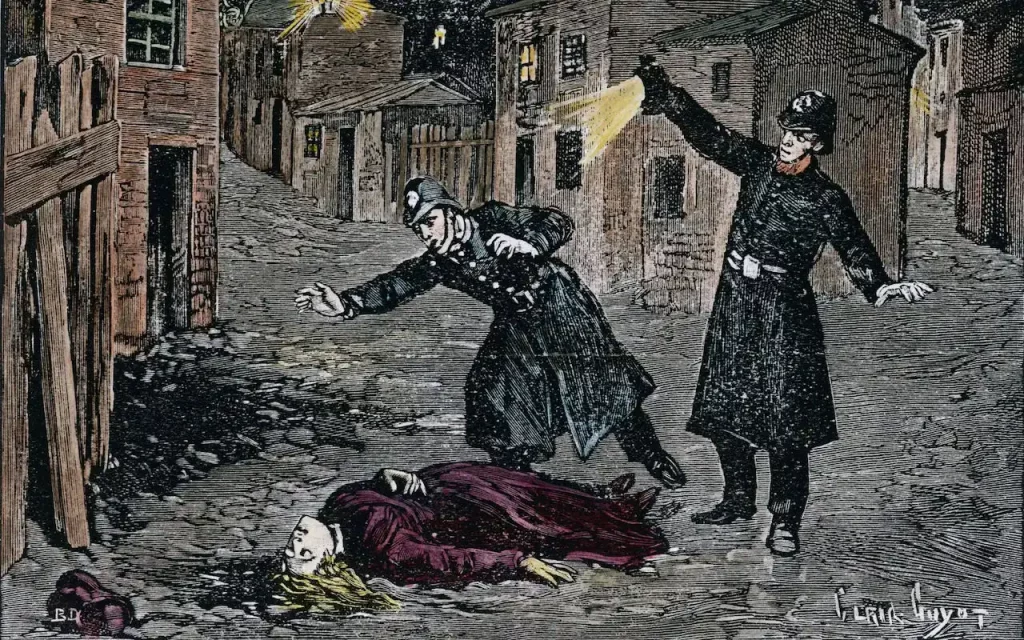
Relatives of Jack the Ripper’s victims are calling for a fresh inquest after DNA evidence emerged that may finally identify the killer.
At least five women were murdered by an unidentified serial killer during the autumn of 1888 in the Whitechapel district of London in a case that has remained unsolved for 130 years.
But the victims’ descendants are now calling for a fresh inquest after a bloodstained shawl was shown to contain the DNA of someone thought to be the notorious killer.
Aaron Kosminski, who was a Polish barber, was a suspect at the time but was never arrested because police had no evidence linking him to the killings.
But the shawl, said to have been found on the body of Catherine Eddowes, the killer’s fourth victim, was found to contain both her DNA and that of Kosminski’s.
It was purchased at auction by Russell Edwards, an author and Ripper researcher, who said “justice can be served” by finally naming the killer. He has hired a legal team to try to secure another inquest.
Karen Miller, 53, is three times great granddaughter of Eddowes and provided her DNA, which was a match to the sample on the shawl.
“The name Jack the Ripper has become sensationalised, it has gone down in history as this famous character,” she told the Daily Mail.
“It has all been about him, this iconic name, but people have forgotten about the victims who did not have justice at the time.
“What about the real name of the person who did this? Having the real person legally named in a court which can consider all the evidence would be a form of justice for the victims.
“We have got the proof, now we need this inquest to legally name the killer.
“It would mean a lot to me, to my family, to a lot of people to finally have this crime solved.”
Descendants of the Ripper’s other victims – Mary Ann Nichols, Annie Chapman, Elizabeth Stride and Mary Jane Kelly – have also backed the campaign.
Sue Parlour, whose husband Andy is distantly related to Ms Nichols, said: “There was no justice for these victims at the time. It was all such a long time ago.
“But it would mean a lot to finally be able to name the killer, to get some closure on this.
“These women have been dismissed as just prostitutes like they did not matter, but they did.”
Kosminski’s descendants have also supported the move.
Amanda Poulos, his three-times great-niece, said: “I’m more than happy to finally establish what really happened.”
The coroner in the original 1888 inquest returned a verdict of “wilful murder”.
If granted permission by Richard Hermer, the Attorney General, an inquest could go ahead. Sir Michael Ellis refused permission for a new inquiry when he was attorney general two years ago.
Dr Tim Sampson, a barrister, has written to Lord Hermer. He stated that had the shawl been available at the time it “would have been justifiable for the coroner to charge and then seek to have Aaron Kosminski prosecuted for both the murder of Ms Eddowes and the other four victims”.
The case would go to a High Court judge to consider whether permission would be granted.
Mr Edwards said: “A second inquest is the only way of confirming what happened.
“As we now have identified the true murderer with a wealth of evidence putting the man we named as the Ripper in the frame, we want justice to be served.”

发表回复